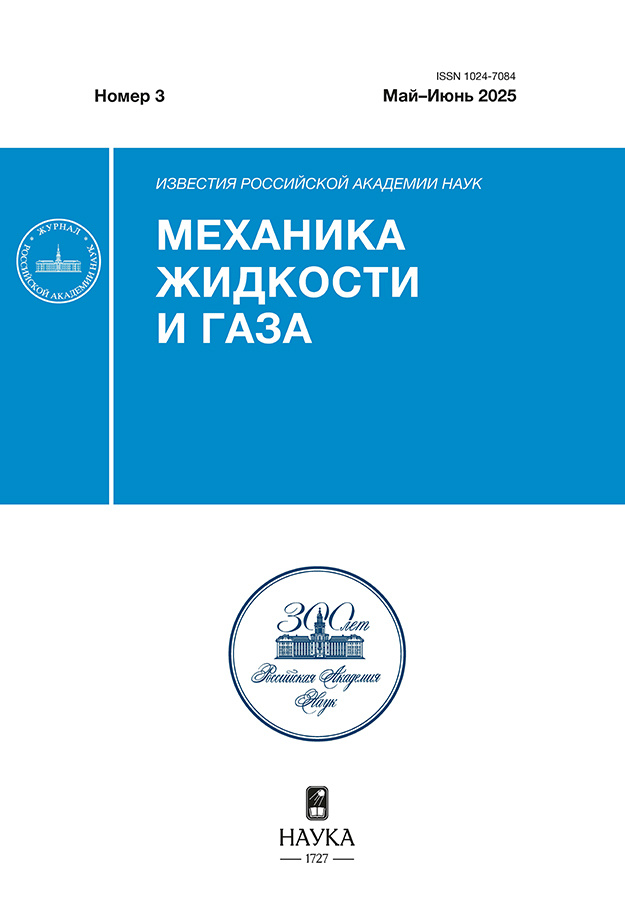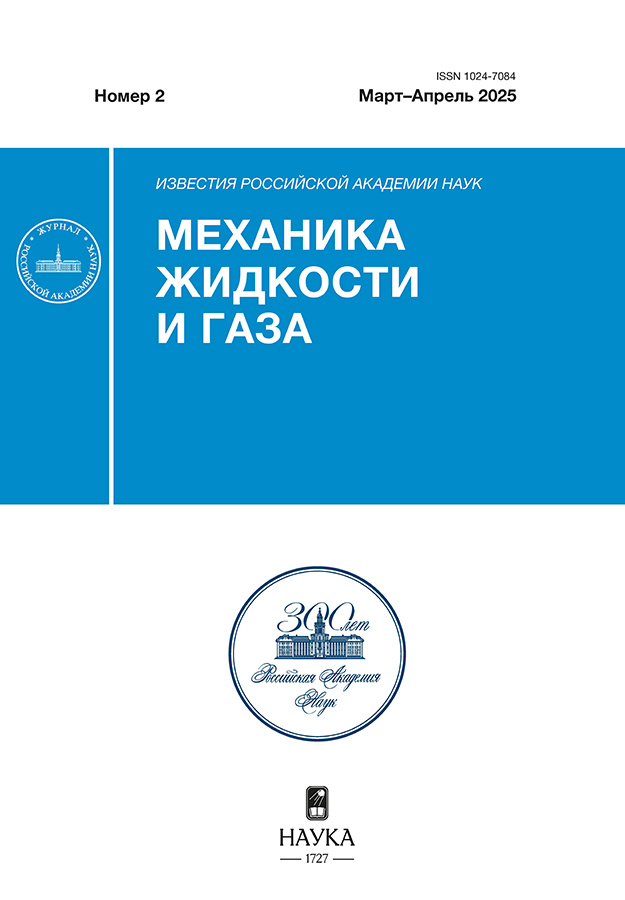ЭКСПЕРИМЕНТАЛЬНОЕ ИЗУЧЕНИЕ ЗАКОНОМЕРНОСТЕЙ САМОПРОИЗВОЛЬНОГО ИЗГИБА ВЯЗКОЙ СТРУИ
- Авторы: Сафронов А.А1, Коротеев А.А1, Агафонов А.Е1, Григорьев А.Л1, Филатов Н.И1, Хлынов А.В1
-
Учреждения:
- АО ГНЦ “Центр Келдыша”
- Выпуск: № 2 (2025)
- Страницы: 76–84
- Раздел: Статьи
- URL: https://transsyst.ru/1024-7084/article/view/687732
- DOI: https://doi.org/10.31857/S1024708425020074
- EDN: https://elibrary.ru/FWBJHM
- ID: 687732
Цитировать
Полный текст
Аннотация
Ключевые слова
Об авторах
А. А Сафронов
АО ГНЦ “Центр Келдыша”
Email: a.a.safr@yandex.ru
Москва, Россия
А. А Коротеев
АО ГНЦ “Центр Келдыша”Москва, Россия
А. Е Агафонов
АО ГНЦ “Центр Келдыша”Москва, Россия
А. Л Григорьев
АО ГНЦ “Центр Келдыша”Москва, Россия
Н. И Филатов
АО ГНЦ “Центр Келдыша”Москва, Россия
А. В Хлынов
АО ГНЦ “Центр Келдыша”Москва, Россия
Список литературы
- Walzel P. Koaleszenz von flussigkeitsstrahlen an brausen // Chem. Ing. Tech. 1980. V. 5. No. 8. P. 652–654.
- Safronov A.A., Koroteev A.A., Agafonov A.E. et al. Experimental Investigation of the Transverse Size of a Viscous Jet Flowing out of a Capillary Channel // Fluid Dynamics. 2024.
- Bejan A. On the buckling property of inviscid jets and the origin of turbulence // Lett. Heat Mass Transfer. 1981. V. 8. No. 3. P. 187–194.
- Ribe N.M., Habibi M., Bonn D. Stability of liquid rope coiling // Phys. of Fluids. 2006. V. 18. No. 8. 084102.
- Jingxuan T., Ribe N.M., Wu X., Shum H.S. Steady and unsteady buckling of viscous capillary jets and liquid bridges // Phys. Review Lett. 2020. V. 125. No. 10.
- Ентов В.М., Ярин А.Л. Динамика свободных струй и пленок вязких и реологически сложных жидкостей // Итоги науки и техники. Сер. Механика жидкости и газа. 1984. Т. 18. С. 112–197.
- Merrer M.L., Quere D., Clanet C. Buckling of viscous filaments of a fluid under compression stresses // Phys. Review Lett. 2012. V. 109. No. 6.
- Lin S.P., Vihinen I., Honohan A., Hudman M. Absolute and convective instability of a liquid jet in microgravity. NASA Report. Mechanical and Aeronautical Engineering Department Clarkson University Potsdam, New York, 1996. 6 p.
- Sunol F., Gonzalez-Cinca R. Liquid jet breakup and subsequent droplet dynamics under normal gravity and in microgravity conditions // Phys. Fluids. 2015. V. 27.
- Umemura A., Osaka J., Shinjo J. et al. Coherent capillary wave structure revealed by ISS experiments for spontaneous nozzle jet disintegration // Microgravity Sci Technol. 2020. V. 32. No. 3. P. 369–397.
- Сафронов А.А., Коротеев А.А., Григорьев А.Л., Филатов Н.И. Моделирование самоиндуцированного капиллярного распада струи вязкой жидкости // Изв. высших учебных заведений. Прикладная нелинейная динамика. 2023. Т. 31. № 6. С. 673–685.
- Ganan-Calvo A.M. A revision on Rayleigh capillary jet breakup // arXiv preprint. 2022. arXiv:2210.13426. 9 p. https://doi.org/10.48550/arXiv.2210.13426
- Wallace D.B., Hayes D.J., Bush J.M. Study of orifice fabrication technologies for the liquid droplet radiator. MicroFab Technologies, Inc., Piano, Texas, 1991.
Дополнительные файлы











